The Intel SSD 320 Review: 25nm G3 is Finally Here
by Anand Lal Shimpi on March 28, 2011 11:08 AM EST- Posted in
- IT Computing
- Storage
- SSDs
- Intel
- Intel SSD 320
It's called the Intel SSD 320, but the part number should give away just what we're looking at here:
This is the long awaited third generation Intel based SSD. This is the G3. And at this point it's around 6 months late.
Back then it was simply called the Postville Refresh on Intel's roadmaps (Postville was the 34nm Intel X25-M G2). It would use 25nm Intel NAND, feature improved performance and full disk encryption - all behind a 3Gbps SATA interface.
When I spoke with Intel about the drive last year, all indications pointed to it being faster than drives based on SandForce's SF-1200 controller. And it is:
| Intel SSD 320 300GB vs. Corsair Force F120 | ||||
| AT Storage Bench 2011 (Heavy) | AT Storage Bench 2011 (Light) | |||
| Corsair Force F120 | 120.1 MB/s | 155.9 MB/s | ||
| Intel SSD 320 300GB | 132.8 MB/s | 161.7 MB/s | ||
Without turning to any real time compression/deduplication techniques, Intel has built a drive that's faster than the SF-1200. You also get that famed Intel SSD reliability:
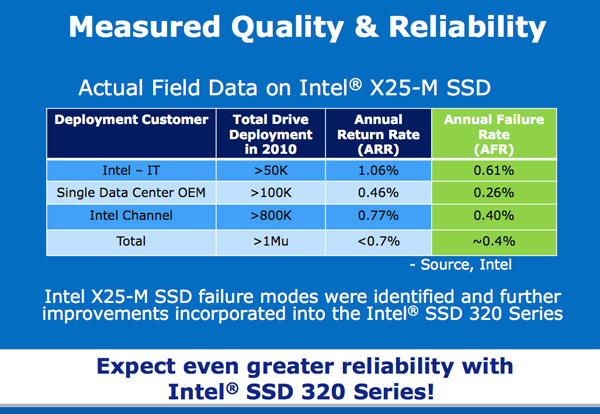
There's just one issue. The SF-1200 was the king of 2010. This year is shaping up to be all about the SF-2200 and the G3 isn't quite as competitive there. Intel realized this as well and thus we got the Intel SSD 510 to address the high performance market. Intel claims the 510 should have the same failure rate as the 34nm X25-M G2 at ~0.6% per year.
The Intel SSD 320 by comparison is aimed at the mainstream market. Remember that's what the M in X25-M always stood for to begin with. As a result we get lower pricing:
| Intel SSD Comparison | ||||||||||||
| X25-M G2 160GB | Intel SSD 320 40GB | Intel SSD 320 80GB | Intel SSD 320 120GB | Intel SSD 320 160GB | Intel SSD 320 300GB | Intel SSD 320 600GB | SSD 510 120GB | SSD 510 250GB | ||||
| User Capacity | 149GB | 37GB | 74GB | 111GB | 149GB | 279GB | 558GB | 111GB | 232GB | |||
| Random Read Performance | Up to 35K IOPS | Up to 30K IOPS | Up to 38K IOPS | Up to 38K IOPS | Up to 39K IOPS | Up to 39.5K IOPS | Up to 39.5K IOPS | Up to 20K IOPS | Up to 20K IOPS | |||
| Random Write Performance | Up to 8.6K IOPS | Up to 3.7K IOPS | Up to 10K IOPS | Up to 14K IOPS | Up to 21K IOPS | Up to 23K IOPS | Up to 23K IOPS | Up to 8K IOPS | Up to 8K IOPS | |||
| Sequential Read Performance | Up to 250MB/s | Up to 200MB/s | Up to 270MB/s | Up to 400MB/s (6Gbps) | Up to 500MB/s (6Gbps) | |||||||
| Sequential Write Performance | Up to 100MB/s | Up to 45MB/s | Up to 90MB/s | Up to 130MB/s | Up to 165MB/s | Up to 205MB/s | Up to 220MB/s | Up to 210MB/s (6Gbps) | Up to 315MB/s (6Gbps) | |||
| Price | $404 | $89 | $159 | $209 | $289 | $529 | $1069 | $284 | $584 | |||
It's still early in the 25nm ramp, but the 25nm Intel SSD 320 is cheaper than the 34nm Intel SSD 510. The only issue is that OCZ is very competitive with its pricing as well and compared to the Vertex 2, Intel's SSD 320 isn't really any cheaper. Intel likes to maintain its 65% profit margins so even though it makes the NAND and the controller in the 320, we're unlikely to see these drives drop below competitive pricing.
Intel expects the 25nm SSD 320 to be even more reliable than the 510 or X25-M.
The Same Controller
The Intel SSD 320, like the 310 and X25-M before it, uses an Intel branded controller. Opening up the 320 reveals a near identical controller to what we saw in the 34nm X25-M G2 housing:
You'll notice the part number is identical to 2009's X25-M G2 controller. In fact, it's the same controller. Apparently the G2 controller had a number of features on-die, but not implemented in firmware. Things like full disk encryption and NAND redundancy never made it out in G2 but are here in the 320 all thanks to new firmware. And no, G2 owners aren't getting it.
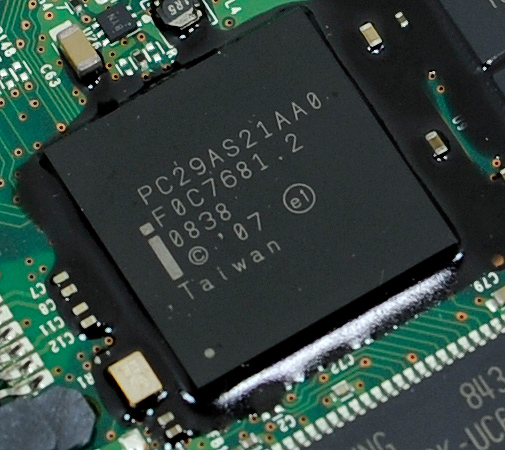
Intel's X25-M G1 Controller
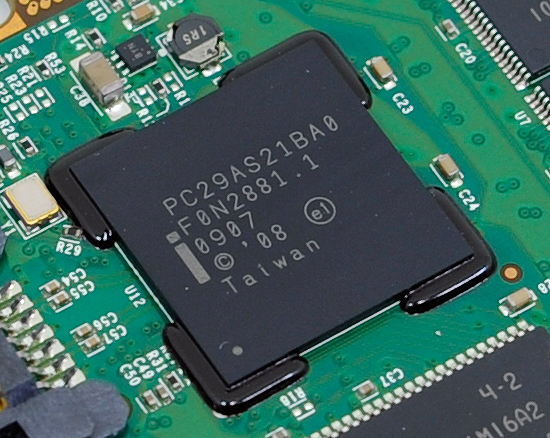
Intel's X25-M G2 Controller
Since the controller hasn't changed, the basic architecture of the SSD hasn't changed either. Intel still doesn't store any user data in its external DRAM cache and there's still a 256KB on-die SRAM.
Next to the Intel controller is a 64MB 166MHz SDRAM device, now made by Hynix. You'll notice that the DRAM chip is a lot smaller than what we've seen in previous X25-M generations, despite growing in capacity. Intel actually turned to mobile SDRAM for use in the SSD 320 to help save on power. While the X25-M G1 and G2 both used a conventional 3.3V SDRAM device, Intel moved to a 1.8V mobile SDRAM chip with the 320.
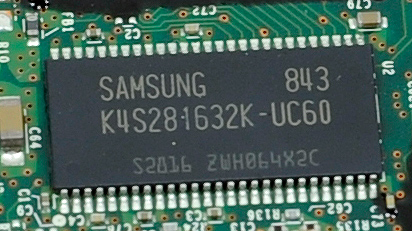
Intel X25-M G1: 16MB 166MHz SDRAM
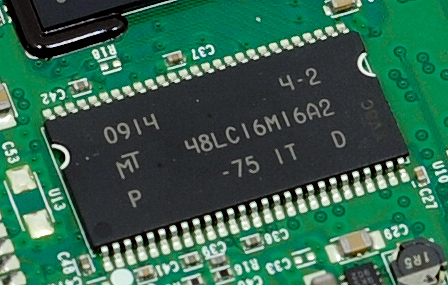
Intel X25-M G2: 32MB 133MHz SDRAM
Intel always prided itself on not storing any user data in its DRAM cache. The external DRAM is only used to cache mapping tables and serve as the controller's scratchpad. In the event of a sudden loss of power, Intel only has to commit whatever data it has in its SRAM to NAND. To minimize the amount of data loss in the event of a sudden power failure, Intel outfitted the SSD 320 with an array of six 470µF capacitors in parallel.
We've seen large capacitors on SSDs before, primarily the enterprise SandForce drives that boast a 0.09F supercap. Intel claims that for its design a single large capacitor isn't necessary given the minimal amount of data that's cached. It further claims that an array of multiple capacitors in parallel allows for much better reliability - if one capacitor fails the array is still useful (vs. a single point of failure in the case of the supercap).



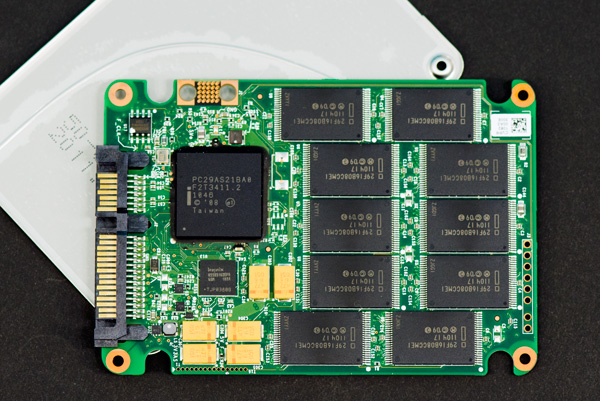
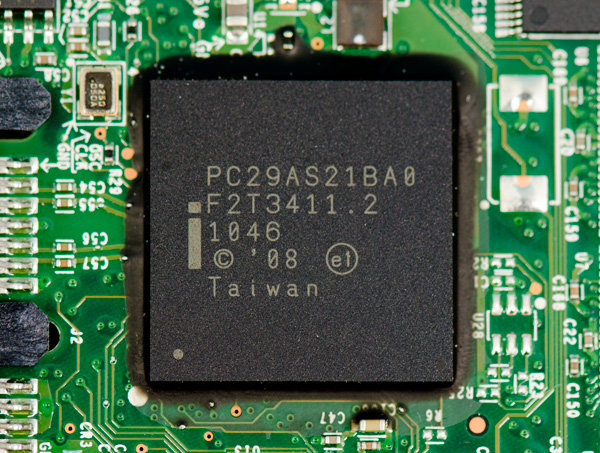
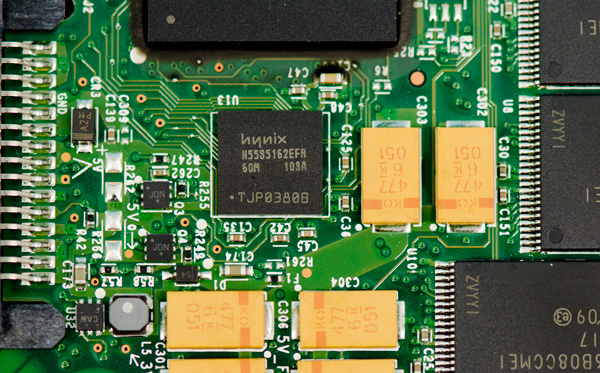









194 Comments
View All Comments
piquadrat - Monday, March 28, 2011 - link
But is it true that on most of todays mobos and their bioses you can't set ATA password with more than 8 characters? I've read about this in many places.Anand says that passwords used to encrypt Intel's ssd are generated automatically during each secure erase. So user can define ATA pass only during secure erasing the drive? Every change of ATA pass require secure erase?
I thought that ATA pass is defined in bios and changed in bios. It means outside operating system and any soft toolbox Intel provides.
There are so many places in the net and even commertial companies that offer unlocking ATA secured deviced. Mostly they use non-official unlocking codes (manufacturers implemented them in firmware!!!). Can we trust that no such codes for 320 series surfaced in the near future? To sum up: is this secure on the enterprise level?
Is there any independent secure certificate Intel can give us at the moment?
overzealot - Tuesday, March 29, 2011 - link
The user doesn't supply a key - the drive generates one itself.The data can be accessed by ANY computer if you're accessing it by SATA, the point is to secure the data on the NAND (pro hackers attach a controller to the memory chips and read it directly).
Using previous SSD's, you could format the drive and just read the data straight off the chips. On these drives, erased data is inaccessible this way.
If you want secure data, use TrueCrypt or Bitlocker.
piquadrat - Tuesday, March 29, 2011 - link
Truecrypt and bitlocker are not suitable for ssds as they contradict internal wear-leveling mechanisms and kill performance of compression based controllers (like all SandForces).To sum up all this AES thing in intel's 320 is no different then in SF based drives (like Vertex 2)?
If keys are internal and not linked to ATA password in bios, when someone steal my drive (bios not supporting ATA pass or ATA pass bypassed/hacked) he has full access to it. So tell me:
Why anybody would BOTHER with "attaching a controller to memory chips and read it directly"? WHAT FOR? He has full access to drive without all that hassle.
overzealot - Thursday, March 31, 2011 - link
I'm sorry I wasn't clear.When you format or delete data from an SSD without internal encryption, data is still accessible directly from the chips. This encryption is to stop that.
Also, the performance of Sandforce drives does not drop handling compressed data! It just can't compress it any more, so really it's still throwing the exact same amount of data around!
You would see an improvement in throughput on drives that don't natively compress, but from the data I've seen they'd still be slower than Sandforce.
piquadrat - Saturday, April 2, 2011 - link
Just like in conventional HDDs, you can always do secure erase even without internal AES. It only adds max 1-2 to the live counter of each cell. On the other end how often does typical user need that kind of maintenance.Yes, they are dropping in performance vs typical statistical compression ratio. They drop from 250 to around 100 MB/s in writes.
Encrypting ssd drive with truecrypt means that effectively wear leveling algorithms see the drive as fully loaded. Spare area is used much more intensively. The drive starts to have problems with trimming and Garbage Collector. Additional empty partition required.
To sum up for Vertex2 with truecrypt and intel NI AES supported processor: read: 140MB/s, write: 70MB/s. 4K reduced by 50-60%. These are facts.
MeanBruce - Monday, March 28, 2011 - link
Intel's plan was to give us a little bump in performance every two years just to keep us happy and keep us buying and maybe go to 6GB/s by 2015 after their sata 2 drives had showed a slow yet incremental speed increase just enough to apease the masses. They never saw SandForce coming! I thought Intel would simply pull more performance out of their hat to meet the challenge, I never thought the hat would be empty!Drag0nFire - Monday, March 28, 2011 - link
Dear Anand,Given the switch to a new generation of NAND, any comments on the expected longevity of these new drives? How long will one last in a normal usage scenario?
Thanks,
--Jonathan
Drag0nFire - Monday, March 28, 2011 - link
Also, would it be possible to report the physical dimensions of the drive? I believe I may need a 2.5in drive with a height of 7mm for my next laptop, but it is difficult to find information on the height of SSDs.Thanks!
y.a.k - Tuesday, March 29, 2011 - link
Intel drives come with a spacer that makes them 9.5mm high. Removing this makes them 7mm high.B3an - Monday, March 28, 2011 - link
This has been commented on other recent SSD articles.